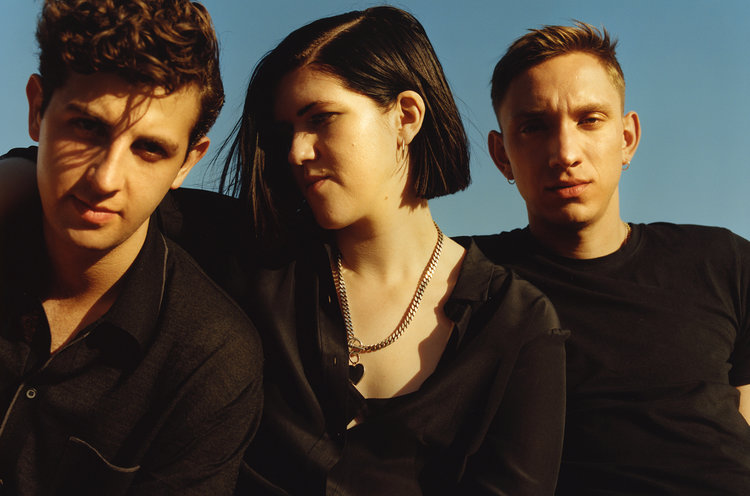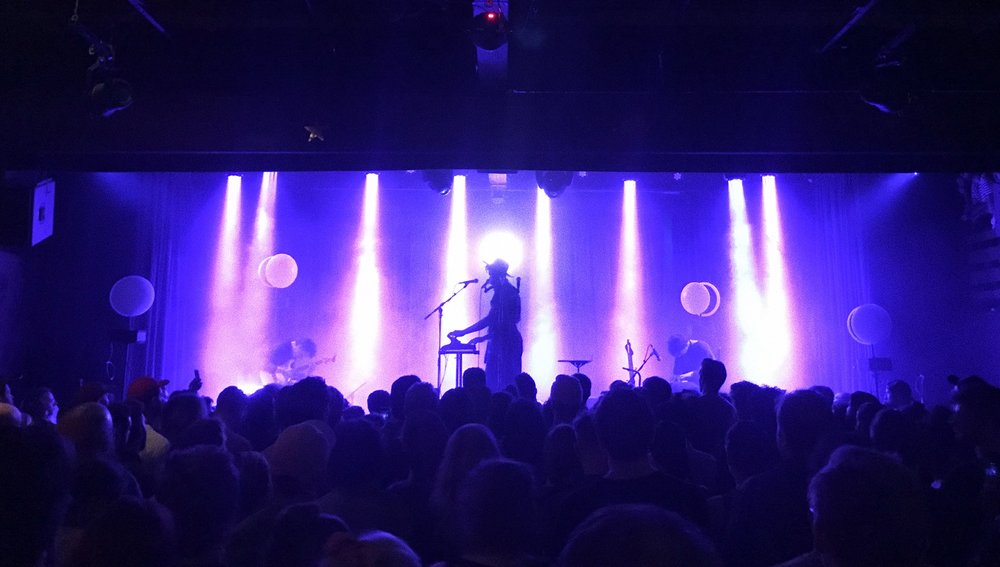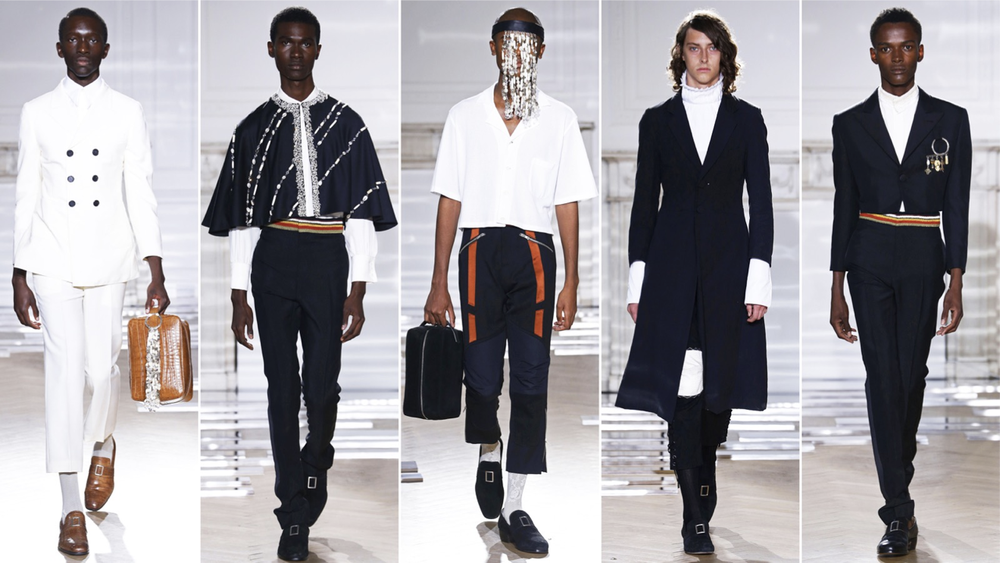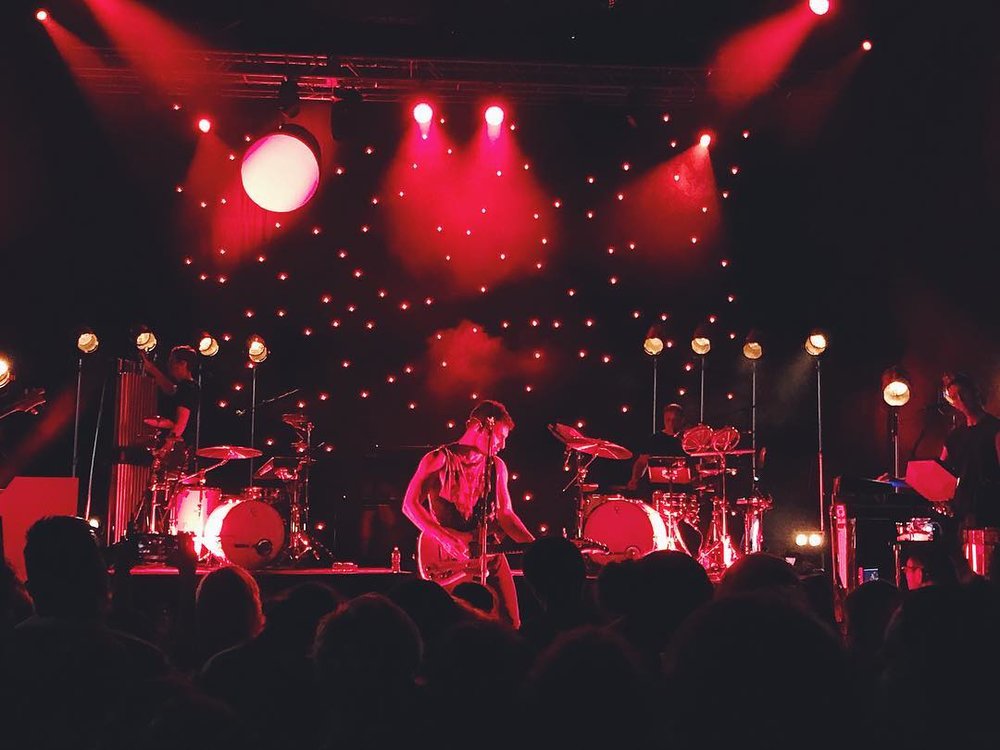Two of the questions we are most often asked include “What is a creative director?” quickly followed by “How do I become one?” We frankly haven’t got a clue, which is why we figured we’d talk to two of our favorites. Clare Gillen has worked with Tinashe and and Blood Orange, and is most recently responsible for the creative direction of your favorite, King Princess . It was Gillen who interpreted King Princess’s unapologetic queerness for the video for “1950,” helping her create imagery that felt authentic to her as an artist. Imogen Snell, meanwhile, the long term creative director for The xx, known for its incredible album artwork, works closely with designer Grace Wales-Bonner, and recently has been spearheading the creative rebirth of Anna Calvi’s true punk self.
We sat down with Gillen and Snell to talk about breaking into the industry, what exactly they spend their time doing, and why experiential (a.k.a. performance) is the way forward for both artists and the creatives who work with them.
How did you get into creative direction? It’s not exactly a field they tell you about at school.
Clare Gillen: I went to a weird little liberal arts school in North Carolina called Guilford. I wanted to do creative work but had no idea how, so I did odd jobs like waitressing and a lot of different stuff. In hindsight, all of those things, like saving up to get an expensive camera, to shoot and play with, collecting strange things, doing creative projects with friends for art shows, they contributed to what I do now. My friend was like, “This artist Alex Da Corte is looking for an assistant, do you want the gig?” That was my foot in the door, and I worked for him for a few years, not only as an assistant but producing his art. I then went to work with the creative director Willo Perron in LA — thanks to Alex and Willo I learned so much.
A few years later, I realized I was done working with men, and giving my ideas to someone else, which is part of the process. I was floundering for a few months until I put a portfolio together, and since then it’s been non stop.
Imogen Snell: I grew up in Kent with five brothers who are all farmers. When I was 14, I got scouted as a model, which kind of showed me you didn’t have to live by being a geography teacher, or a lawyer, which is what everyone did. It introduced me to what photographers do, and stylists, and set designers. I went to Saint Martins and studied Fashion Communication, because I was interested in all the ways fashion was communicated. Not design but photography and styling and film making. It was quite a good all round course, and I’m an all round person. I’m not one thing, I’m not a photographer or a director — I’m a creative director.
I started working for a really big creative director called Sam Gainsbury, who did all the McQueen shows, and the McQueen exhibition and the punk exhibition at the Met. She runs a very big company, and it was all women in the office. And it was such an empowering and terrifying environment, and I loved it. That whole office, and how they run things. I worked on the punk exhibition start to finish, which was great.
Now I work with a number of musicians, whether it’s more on live stuff, or directing shoots and videos — making sure they get a vision that’s cohesive from start to finish. It started in Kent, and now it’s starting, or beginning again in LA. So it’s been a long and windy road!

Do you think you learn just as much from the jobs you hate as the ones you love?
Imogen Snell: I’ve literally had every job under the sun, and a bit like Clare, I worked when I was 14. It gives you a work ethic, for starters. And if you’ve got that it’ll take you somewhere. I don’t know, do I wish I’d done all those things? Maybe! It was working out what I didn’t want to do. I assisted a stylist and realized I definitely didn’t want to be a stylist, so that definitely helped me in a direct way! I do wonder what would happen if my parents had been curators at the Tate, or Pina Bausch however [laughs].
Clare Gillen: I think about that all the time.
Imogen Snell: I think you just have to be pleased when you’ve made the best of it in life.
Clare Gillen: I’ve had a lot of people tell me that I should choose one thing, that I should get really good at one thing. And I think it’s my personality, where I feel a million percent not done at all at being a creative director. And having a million projects. I’m still hungry to try everything. I don’t want to stop. I think working a lot of jobs, you experience a lot, and that helps.
You’ve both mentioned creative direction as being a natural field for women, could you expand upon that?
Clare Gillen: It happens really naturally. Now, being fortunate being enough to work with other women, there’s a much bigger book of communication. Which has really helped.
Imogen Snell: I find it can be a self fulfilling prophecy, separating myself as a woman. I personally have always felt so empowered. What I can never believe as a creative director is how personal it is — when you work with an artist, you’re in their brain, you’re in their headspace and emotions. They’ve written an album, which is their life, and you’re now going to present to them. So I think the creative director role has a more feminine aspect in that I spend half my time listening to people.
Clare Gillen: Thanks for saying that so well. I’m a person, and I’ve learned as much from men as I have from women. It’s all wrapped up in being human. Being a sensitive person is so crucial to being a creative director, in a way because you have to be really patient and a really good listener. I’ve found in a lot of the work I’ve done, people want to be listened to more than anything. If you can communicate with them, and be open, you can get to the bottom. Which is really advantageous in this role!

What’s the difference between creating a shoot and more experiential work?
Clare Gillen: To me, it’s so so different. I make visuals for a band in my bedroom in a fish tank, with a flashlight, and some marbles and mylar. On a greater scale, that looks like a universe when it’s flung up on an I-MAG screen. I definitely think there’s overlap.
Imogen Snell: what’s beautiful about the experiential moment is that it’s fleeting. I find that exciting, you go to a gig or a fashion show, and yeah you can look at it on live feed or video but it’s never quite the same. There’s an essence and a magic. And I think it goes beyond the fact that a musician or a brand can make money — it’s where they’re connecting with their audience. You’re speaking directly to your fans at that moment. So it’s very intimate and human.
Working on video I find incredibly tiresome and difficult. It’s a lot of whats and ifs. Live is something amazing where it comes about the reaction of the people. Something that can only happen in one moment. So I find them very different roles to be honest.
Clare Gillen: It’s such a whole other beast creating something live. Building something that won’t fall over and kill someone, and at the same time something that fits in a truck, and is also flame proof. You become a background for the artist. It’s exciting for sure, being absorbed into an artist’s universe. But it definitely feels different to my ego. No one is supposed to know you did it, and I think it’s only now that people are starting to understand that creative directors and set designers exist.

There’s not the same awareness as say, photographers.
Imogen Snell: As Clare was saying, people don’t necessarily know what we do. It’s amazing because I’ve always done this, and now a space for it exists. Even for a visual for an album, a musician will send me an album three months before, I’ll listen to it, and come up with themes, and ideas, and references, and 100 different mood boards. Then we’ll narrow it down to the shoots, the styling reference, the hair. Three months later, the shoot happens and everyone thinks that’s where it started. I love working with photographers, they’re brilliant innovators, and it’s not to say they don’t do any work! But the process starts much earlier! That used to happen in an advertising agency. But they’re kind of a dying breed too, and it’s been handed over to these individuals.
Clare Gillen: my phone does not stop making noise. All through the night.

Could you talk about a project you particularly loved?
Clare Gillen: I would love to talk about King Princess, who is my little baby nugget who I love so much. King Princess is just so fun, there’s such an authentic and unpretentious approach to her, where we can show off. She doesn’t even need makeup, and it’s so liberating when I’m used to more high maintenance women. With artists with lower budgets it’s sometimes hard to know what to do with the money, but this was like, “Let’s just be ourselves.” We made four or five music videos. And the first we made, for “1950,” it was like, “Let’s shoot at my house, let’s go to a park and see what happens, lets have my assistant be your love interest. Let’s sneak into the upstairs of some strange lounge/restaurant and pose in front of the taxidermy animals. Let’s see what’s in my closet, let’s see what’s in yours.”
I think it became something more genuine than I’ve experienced before, without the many layers of hierarchy. It felt cool to undo some of the imagined tools, and really get creative in a way that feels much more hands on and intuitive than projects where things are a lot more black and white. With her, it’s so liberating to just connect and have it light hearted. It’s a real connection we get to exercise in front of the camera.
Imogen Snell: I’ve just worked on a full album campaign for Anna Calvi. She played me her music quite early on, and it has this incredible raw, feminine, and quite punk sound. I was immediately taken with the music because it was much more intense than anything I’d heard from her before. I went and met her, and we started discussing how it’s a queer album, and she’s feeling empowered, and we really got on. Suddenly the visual world just came to me, and I went away and did a bunch of research and it was bang on, she loved it.
All the references she’d told me about were totally in my world — power and performance, and tailoring and woman. It was just the perfect project to me, it was so visual. She gave me a lot of freedom, and I got to work with Emma Wyman from Dazed who’s a brilliant stylist… we basically made an incredible world. Sometimes you don’t have that as a creative director, when you get brought on to execute someone’s vision. Of course I understand briefs, but this was just a particular project I was proud of because it was close to visuals I like. We had a direct line about what we were trying to do.
Clare Gillen and Imogen Snell are represented by IAMSOUND.
